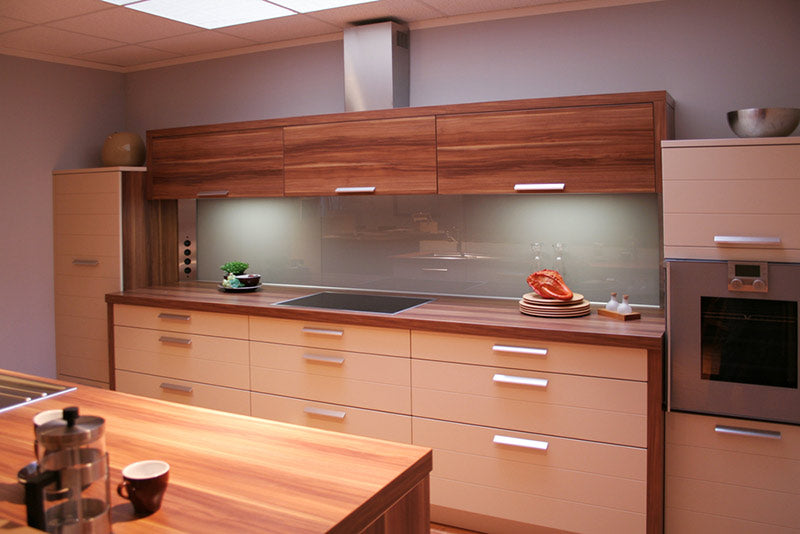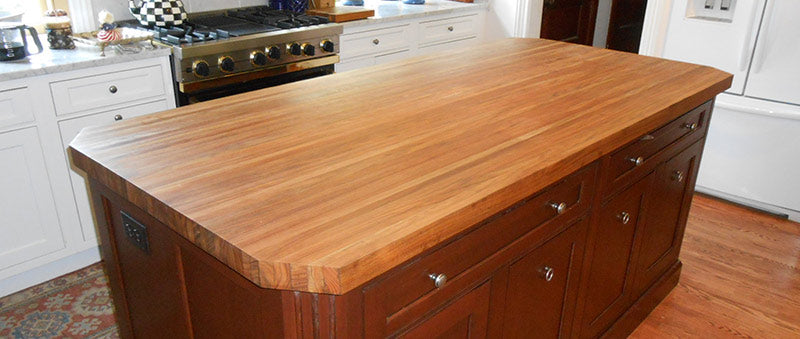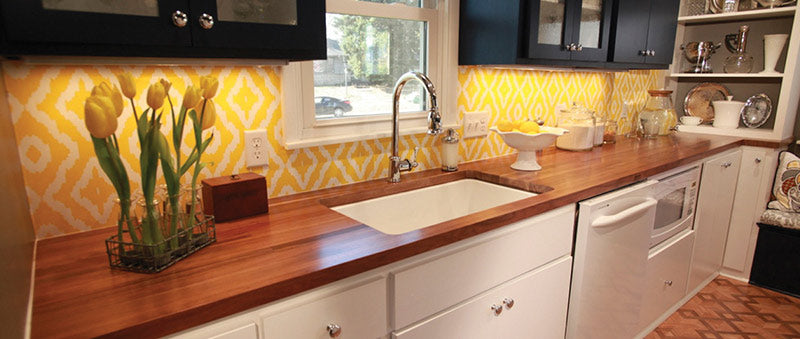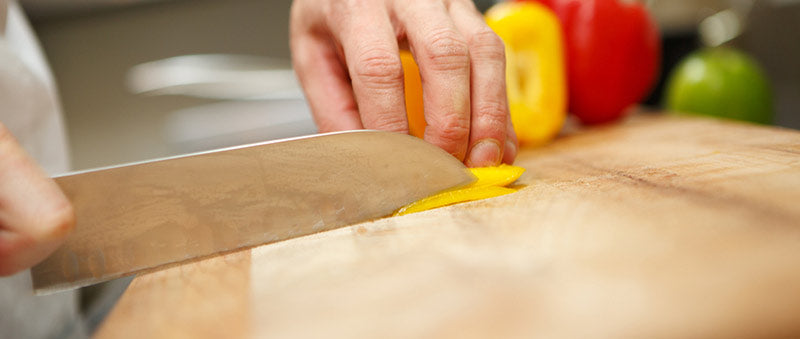Posted on November 17 2015
Marble, granite, composite and wood, all these and more make up the dizzying modern world of countertop options for those planning a remodel, or first time kitchen build. The question is, what is the best surface for the heart of your home?
When imagining a natural and beautiful countertop for your home kitchen, it’s hard to beat the appeal and warmth of wood, but before you set your sights on any one surface, be sure to take into account the pros and cons of owning a wooden countertop.
Kitchen counters made from wood are popping up in magazines and websites throughout the home remodeling arena, and for good reason, a wooden countertop is not only durable, and warmer to the touch than a stone alternative, it’s beautiful. The aesthetic of a wood countertop really can’t be beat and the options are almost limitless: light colored hard Maples, red and sultry Cherry, or mysteriously dark Black Walnut. Whatever you choose, you’ll be adding an element of design to your space.
Better Sustainability and Lower Cost
Wood is a renewable and affordable resource with many varieties grown and processed in the United States. Today’s managed forests provide the market with an abundance of second-growth wood options for kitchen use, as well as construction, food products, and furniture production. At nearly half the cost of marble and granite, wood is an appealing choice for a natural surface at a reasonable price.

Face grain walnut cabinets, table and countertop
Maple, Cherry, Hickory and Walnut make excellent and intriguing hard counter surfaces and will age wonderfully with proper care (which we will detail below). The popularity of Maple has increased over the last several decades in part because it is an inexpensive United States grown wood, as well as a great solution for a solid cutting surface. It is also subtle enough in appearance to blend into several different design elements, and because of all this it’s a top seller on the market.
Wood countertops also offer ease of installation over stone, which only increases their financial sustainability. Poured concrete, marble, granite, stone and man made materials require pre-cutting and specific measuring, along with wait time and cost for shipping. Wood can be cut and installed onsite by a skilled carpenter and is inexpensive enough to over order for the perfect fit. It’s also lighter than many other materials on the market and less fragile, leading to even more cost savings.

Edge grain teak island countertop
Imported woods like Teak, Zebrawood and Tigerwood are gaining popularity for their eccentric grain, bold design elements, and incredible durability. All three are extremely hard woods and are likely to outlive your kitchen, but do make sure to research where your wood countertops are coming from and if those woods are endangered. Exploited woods like Mahogany and other trees found in tropical growing regions, though beautiful, should be avoided in favor of second growth regional woods from North America.
Naturally Food Safe
Hard Rock Maple varieties abound on the market, and are approved by the NSF for food contact because of their anti-bacterial quality. Many similar hardwoods, like Black Walnut and Hickory offer similar anti-bacterial advantages (as do other woods with small pore structures), absorbing germs and causing them to die within the inner wood grains. Bacteria are known to have a shorter lifespan on wood work-surfaces than they do on plastic or other man-made materials. This is one more reason to opt for wood in your kitchen. Some woods however have a better ability to do this productively, like Maple, and are therefore better recommended by governing food safety officials for kitchen use.
Easy to Moderate Care and Maintenance

Example of John Boos Walnut Countertop for Food Use
There are two types of wooden countertops found in home kitchens today, those used for direct food preparation and those used as decorative gathering places. Some kitchens will have a combination of both. Wood countertops used as a cutting and cooking surface will be finished differently than those that are meant to be decorative – or for lighter use.
A decorative wood countertop is a common example of a top you would find in the kitchen, office area or even your informal dining area. Decorative tops are sealed with varnish, which provides excellent water and stain proofing and minimal maintenance. Varnish creates a seal on the top layer of the wood that penetrates the natural wood pores and prevents foreign material from entering the wood.
In contrast, a working wood countertop used for direct cutting and food preparation cannot use varnish, because it is not food safe and varnish will chip if cut on. In this case, the wood will need to be cleaned and oiled periodically with food safe mineral oil, and thus require a little more upkeep over the course of its life.
Food safe mineral should be applied at installation of any wood countertop until the wood is fully saturated. Experts agree that adding food safe citrus oil to your mineral oil will help with absorption. Once fully saturated, wood should be kept as dry as possible between cooking, especially around kitchen sinks. Simple hot water and soap scrubs can be used on this surface, as well as diluted bleach washes to sanitize. Oil should be re-applied every three months, or as needed to the cleaned work surface, helping to maintain the wood’s moisture levels and prevent drying or cracking.
Use Directly for Food Preparation

A “live” wood countertop used for food prep will improve with age and become a favorite place in your kitchen. High quality butcher block surface, as well harvested long grain wood countertops, will require multiple coats of oil for longevity, but with proper care will last for many years. In addition, non-sealed wood surfaces can be easy resurfaced if necessary, as opposed to a marble or granite countertop.
Regardless of the extra time spent tending to wood, there are many benefits to installing this natural countertop in your home kitchen. Rather than shuffling about for counter protection in the form of a cutting board, a busy chef can work directly in front of himself or herself with an entire counter area to work with.
Wood is warm and welcoming to a chef’s hands and quieter in response to equipment than alternative counter surfaces. Pots and pans will not have quite the same “clang” on a wood work surface as they would granite, tile or marble, and knives will respond well to the surface, improving not only your cooking, but your sanity. Best of all, as your wood countertop ages it will carry with it the story of what evolved in your kitchen, for generations to come.

